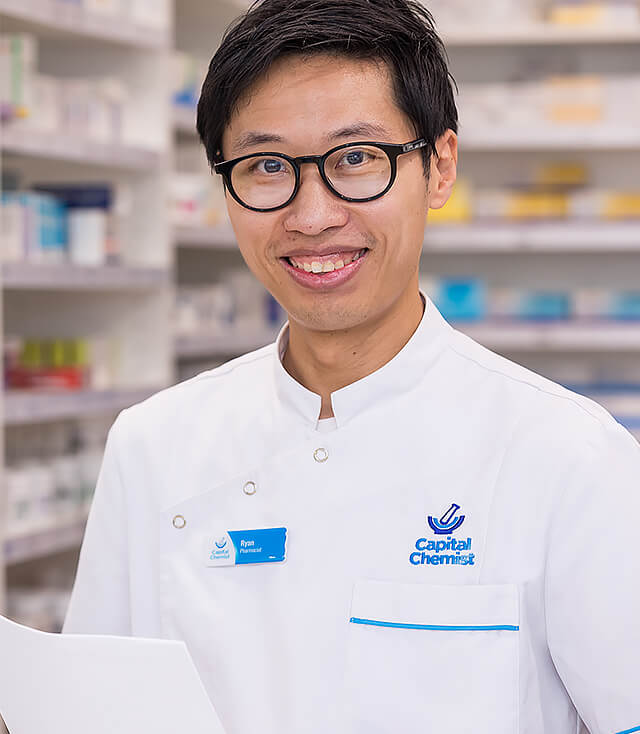Millions of people suffer from obstructive sleep apnoea, yet 80% are undiagnosed.1
With the average person visiting pharmacy over 18 times per year, pharmacy is best placed to identify these undiagnosed patients through their symptoms and comorbidities.
As the most accessible healthcare professionals, pharmacists are ideally placed to help serve the community.
If patients present in pharmacy with Type 2 diabetes, high blood pressure, obesity or display symptoms such as daytime tiredness, morning headaches or complain of snoring, it’s a chance to screen and diagnose for obstructive sleep apnoea.
The free and simple questionnaire is the first step in diagnosing a patient. Their accumulative score will help you determine if it’s necessary for them to go on to take a home sleep test.
1. Benjafield et al., Estimation of the global prevalence and burden of obstructive sleep apnoea: a literature-based analysis, UC San Diego, 2019.
Levels of sleep testing
An overnight diagnostic sleep test is necessary to confirm a diagnosis of OSA and evaluate its severity. Sleep apnoea testing is classed across four levels.
Pharmacy Sleep Services offers level 3 testing which can be conducted in the comfort of a patient’s home and does not require a GP referral.
These are the differences between the two main levels of sleep testing:
Level 3 sleep testing
A simple test performed at home.
No waiting times and results from an accredited sleep physician in 7-10 days.
$99RRP and no doctor referral necessary.
Capturing a minimum of seven key channels of data including:
- Body oxygen levels by measuring light transmission through the finger with an oximeter
- Airflow through the nose
- Respiratory effort
- Positional data
- Heart rate information from the oximeter
- Levels of snoring from the cannula/airflow
- Changes in blood flow or oxygen using Pleth
Level 1 sleep testing
An overnight stay in a sleep hospital monitored by a sleep technologist.
Long waiting times.
$750 plus cost of hospital stay ($250-$500) and ongoing costs of post consultation meetings. Private insurance may cover some of these costs.
Capturing between 7-16 channels of data including:
- Body oxygen levels by measuring light transmission through the finger with an “oximeter”
- Airflow through the nose
- Chest and abdomen movements
- Heart activity via an electrocardiogram (ECG)
- Brain activity via an electroencephalogram (EEG)
- Muscle activity via an electromyogram (EMG)
- Eye activity via an electrooculogram (EOG)
‘Gold Standard’ sleep testing not necessary for identifying most patients with suspected obstructive sleep apnoea (OSA)
Clinical studies point towards the efficacy of level 3 testing. Level 3 portable devices showed good diagnostic performance compared with level 1 sleep tests in adult patients with a high pretest probability of moderate to severe OSA. In fact, level 3 clinical studies have been found to not be inferior to PSG testing in terms of acceptance, adherence, time to treatment and functional improvements. Level 3 testing meets and challenges traditional clinical parameters.1
For patients suspected of other types of sleep-disordered breathing, level 1 remains the reference standard.
1. Corral, et. al, Conventional Polysomnography Is Not Necessary for the Management of Most Patients with Suspected Obstructive Sleep Apnoea No inferiority, Randomized Controlled Trial, 2017.

Alice NightOne home sleep test
(Level 3 sleep testing)

Level 3 Pharmacy Sleep Services home sleep test. Proven performance. Clear results. Clinically backed.
With robust academic literature supporting the use of a level 3 test, the choice is clear. When combined with approved screening methods, STOP-Bang and Epworth Sleepiness Scale, level 3 is as viable as level 1 & 2 testing. The Pharmacy Sleep Services program adheres to this in conjunction with Pharmaceutical Society of Australia (PSA) guidelines for the provision of sleep apnoea services. With Pharmacy Sleep Services, sleep testing is administered with personalised, local and face-to-face support; with a qualified sleep physician.


